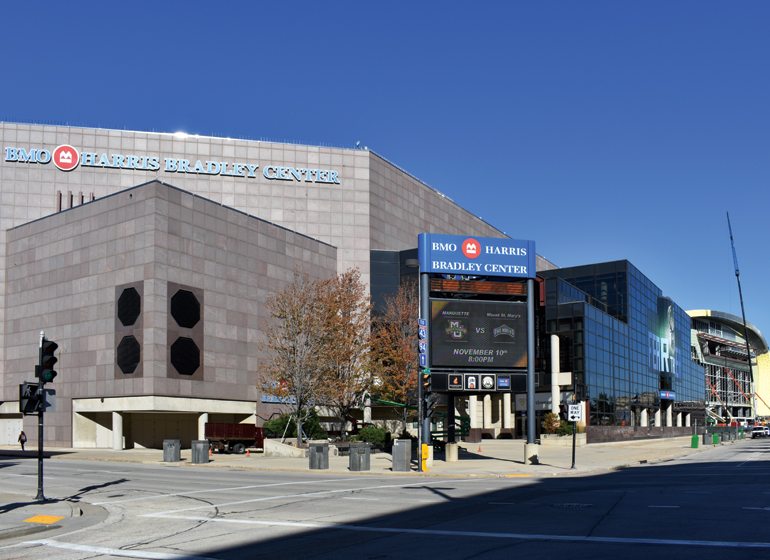
By the time the Bradley Center is completely razed to the ground next year, it will have been almost a year since the building’s deconstruction began.
Demolition crews this month will start taking apart the 30-year-old structure piece-by-piece, a process that will last until early summer 2019, said Mike Abrams, senior director of Denver, Colo.-based sports consulting firm CAA Icon.
The Milwaukee Bucks have hired the company to head the demolition project, which has been gradually underway since July– starting with removal of BMO Harris Bank signage from the building’s facade. Later that month, the center hosted its last ever event as part of Northwestern Mutual Life Insurance Co.’s annual convention.
The Bucks own the soon-to-be vacant, four-acre plot of land that the Bradley Center sits on, which is located just to the south of the new Fiserv Forum, but development plans for the site have not yet been finalized or announced, and the Bucks declined to comment for this story.
Bradley Center Deconstruction continued throughout the summer with the building’s equipment, furniture and amenities, which were sold in bulk to direct buyers and donated to Milwaukee Public Schools, Habitat for Humanity and a local electrical workers union.
Habitat for Humanity in late September completed its 10-day deconstruction of approximately 52,500 pounds of reusable material, which will be resold at its three Habitat ReStore locations in Walker’s Point, Greenfield and Wauwatosa.
Now that the interior has been stripped, demolition crews this month, led by Brookfield-based Hunzinger Construction Co., will begin taking the structure apart. Rogers, Minn.-based Viet & Co. Inc. will perform the demolition.
The glass atriums on the building’s east and west sides will be the first to come down, likely by late fall or early winter, Abrams said.
Workers will then concentrate on demolishing the interior, which will be complete by late winter or early spring. Bowl seating will be included in the demolition, but parts from the seats will be recycled, he said.
The slower, more precise deconstruction method– as opposed to implosion or using a wrecking ball– was chosen for safety reasons, Abrams said.
“It’s not a structure that can come down in that way,” he said. “It’s too close to other adjacent buildings.”
Debris from the project will be removed from the site as soon as it is deconstructed in order to recycle and reuse as many materials as possible.